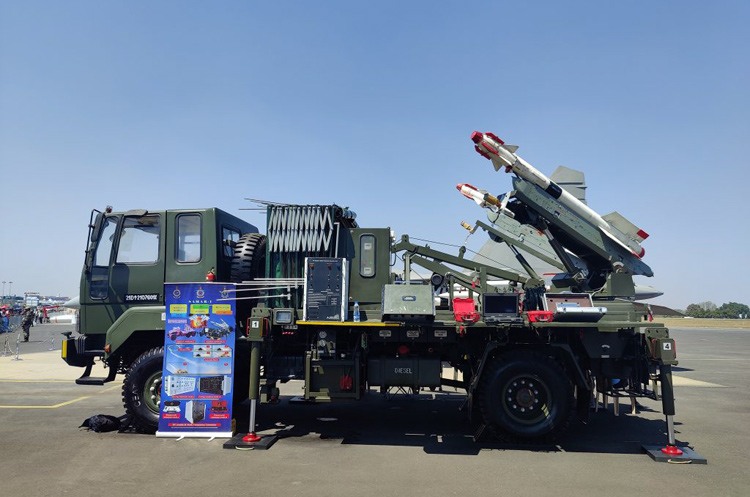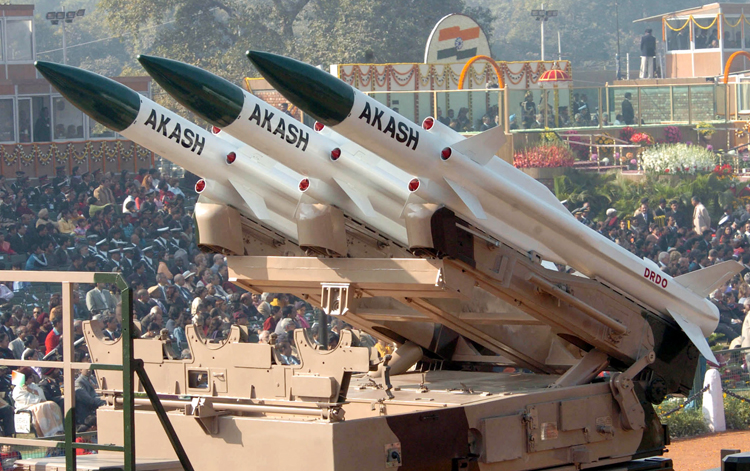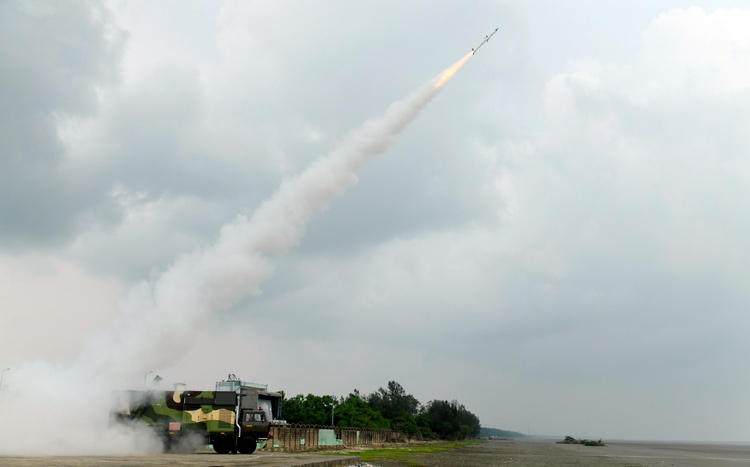INDIAN ARMED FORCES CHIEFS ON
OUR RELENTLESS AND FOCUSED PUBLISHING EFFORTS

SP Guide Publications puts forth a well compiled articulation of issues, pursuits and accomplishments of the Indian Army, over the years

I am confident that SP Guide Publications would continue to inform, inspire and influence.

My compliments to SP Guide Publications for informative and credible reportage on contemporary aerospace issues over the past six decades.
SAMAR & Akash AD Systems
These Systems underscore India's commitment to advancing indigenous air defence capabilities and expanding its influence in the global defence market
 |
The Author is Former Director General of Information Systems and A Special Forces Veteran, Indian Army |

The Indian Air Force (IAF) has inducted the Surface to Air Missile for Assured Retaliation (SAMAR) system, an IAF source told media on December 20, 2023. The exact number of SAMAR air defence systems inducted is not known but another IAF official had told the media in February 2023 that the first batch will include five SAMAR units. The IAF has test-fired the system in mid-December 2023 at Air Force Station Suryalanka located in the southern coastal region of India.
The 7 and 11 Base Repair Depot (BRDs) of the IAF's Maintenance Command located at Tughlakabad and Ojhar respectively, developed the SAMAR air defence system in collaboration with Simran Flowtech Industries and Yamazuki Denki, both Indian private sector companies. The SAMAR system employs Vympei R-73 and Vympei R-27 air-to-air missiles, which are of Russian origin. SAMAR uses reconditioned infrared (IR) homing R-73E, semi-active radar homing Vympel R-27 R1/ER-1, and IR homing Vympel R-27 ET-1 variant of air-to-air missiles (AAMs) that have been further reprogrammed to be utilised as a short range, surface to air (SAM) defence platform. The Russian Vympel R-73E IR-guided air-to-air missiles (AAMs) had finished their shelf life. The AAMs are refurbished and upgraded to perform surface-to-air roles and the missiles can be launched in both single and salvo mode.
The Indian Air Force (IAF) has officially inducted the Surface to Air Missile for Assured Retaliation (SAMAR) system, a road-mobile short-range air defence platform designed for quick reaction and equipped with refurbished Russian-origin air-to-air missiles
Following extensive test firing, the SAMAR short range, quick reaction surface to air missile system made its debut at Aero India 2023 where it was seen with refurbished R-73E missiles on rail launchers mounted on an Ashok Leyland vehicle. The SAMAR-1 system has a 12-km range which allows it to take on low-flying aerial targets like fighter planes, helicopters, and unmanned aerial vehicles (UAVs). The IAF has assigned the project to its Maintenance Command for a road mobile short-range air defence system using thousands of Vympel R-73 and Vympel R-27 missiles that have reached the end of their flight shelf life and are no longer suitable for use from fighter jets.
The SAMAR system, developed by the IAF's Maintenance Command in collaboration with Indian private sector companies, uses reconditioned infrared homing R-73E and semi-active radar homing Vympel R-27 missiles, repurposed for surface-to-air roles with a range of 12 km
In Aero India 2023, the IAF confirmed that the SAMAR-1 system had completed 17 rounds of test firing before entering production. The IAF said that SAMAR system development is complete, the weapon platform has entered the initial phase of manufacturing and five production batches of SAMAR-1 are ready to be delivered to IAF's Air-Defence Missile Unit.
The SAMAR system comprises launch beams, a fire-control unit, an electronic control unit, and auxiliary units including a self-loading knuckle crane, a power supply system, and a servo mechanism feedback unit. Eventually, the SAMAR system will replace the IAF's Pechora air defence systems, which have been in service since the 1970s.

On December 12, India demonstrated the firepower of the indigenous Akash missile system at Suryalanka Air Force Station, where four targets (UAVs) were engaged simultaneously by a single Akash firing unit. A defence official told media, "The Akash firing unit was deployed with Firing Level Radar (FLR), Firing Control Centre (FCC), and two Akash Air Force Launcher (AAFL) launchers having five armed missiles." The successful demonstration of the Akash missile system has now added to India's weapon-export initiatives.
The Akash missile system, designed and developed by the Defence Research and Development Organisation (DRDO), successfully demonstrated its firepower by engaging four targets simultaneously, showcasing its capability and adding to India's weapon-export initiatives
During the Exercise 'Astrashakti' on December 17, 2023 the IAF successfully test fired SAMAR from Air Force Station Suryalanka. It achieved the firing objectives in different engagement scenarios. SAMAR is a twin-turret rail launch platform which can launch two missiles in single or salvo mode. The missile operates in Mach 2 to 2.5 range.

The Akash Weapon System was originally designed and developed by the Defence Research and Development Organisation (DRDO) to provide mobile air defence cover to the Indian Army's mechanised columns on the move, as a replacement for the vintage Russian-origin Kvadrat systems. However, it failed the trials in engaging aerial targets on the move and could not negotiate even small sand dunes. Later, Akash was inducted into the IAF in static role, and subsequently into the Indian Army. The system is being produced by defence public sector units along with other industries.
Akash, originally designed for mobile air defence cover, has garnered international interest, with Armenia securing a significant export order and other countries like Brazil, Egypt, the Philippines, and Oman expressing interest in procuring the system
Akash has since been deployed by the IAF and the Indian Army. The system comprises a launcher, a set of missiles, a control centre, a built-in mission guidance system and C4I (command, control communication and intelligence) centres. It also sports ground equipment including the 'Rajendra' radar, which accompanies each of the missile batteries. According to the MoD, the system has 96 per cent Made in India content.
The demonstration of successfully engaging four targets simultaneously on December 12, 2023, has evinced interest by many countries from South America, West Asia and Africa in the Akash missile system. Already, the Akash SAM weapon system has received a significant export order from Armenia, with supplies scheduled to commence in the next few months. A defence official told the media, "The deliveries to Armenia are expected to begin in the next few months from now. In the meanwhile, many countries including Brazil, Egypt and the Philippines have shown interest in the Akash missile system."
According to the latest news, Oman is also interested in procuring the Akash weapon system and in fact the initial round of discussions has already been completed. Bharat Dynamics Limited (BDL) is looking at clinching a deal to export the Akash weapon system to Oman in 2024. These exports to Armenia and Oman will boost India's defence exports and will likely attract many other countries as well.





